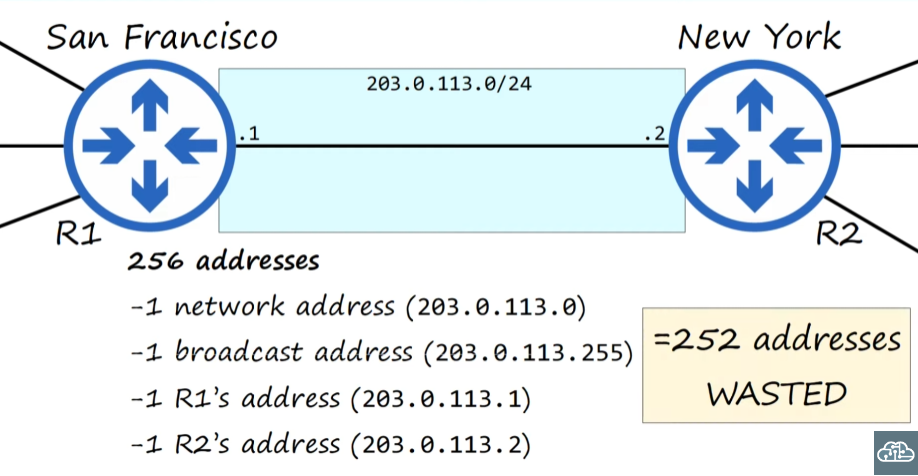Overview
- CIDR (Classless Inter-Domain Routing)
IPv4 Review
- CIDR throws away Class A, B, C, D, E in IPv4.
| Class | First Octet (Binary) | First octet range (decimial) | Prefix Length | |
|---|---|---|---|---|
| A | 0xxxxxxx | 0 - 127 | 0.0.0.0 - 127.255.255.255 | /8 |
| B | 10xxxxxx | 128 - 191 | 128.0.0.0 - 191.255.255.255 | /16 |
| C | 110xxxxx | 192 - 223 | 192.0.0.0 - 223.255.255.255 | /24 |
| D | 1110xxxx | 224 - 239 | 224.0.0.0 - 239.255.255.255 | |
| E | 1111xxxx | 240 - 255 | 240.0.0.0 - 255.255.255.255 | |
| However, only class A, B, C can be assigned to a device. The other 2 are reserved. |

IPv4 Addresses and Assignment
- The IANA (Internet Assigned Numbers Authority) assigns IPv4 addresses/networks to companies based on their size.
- For example, a very large company might receive a class A or class B network, while a small company might receive a class C network.
- This system can lead to many wasted IP addresses.
- Point-to-point networks typically use class C networks.
- Or perhaps a company has 5000 end hosts, which is too large for a class C, so a class B must be used, resulting in 60,000~ addresses wasted.
- Point-to-point networks typically use class C networks.
CIDR (Classes Inter-Domain Routing)
- IETF (Internet Engineering Task Force) introduced CIDR in 1993 to replace classful addressing system.
- The removal of class allowed for larger networks to be split into smaller networks, called ‘subnetworks‘ or ‘subnets‘
Consider the following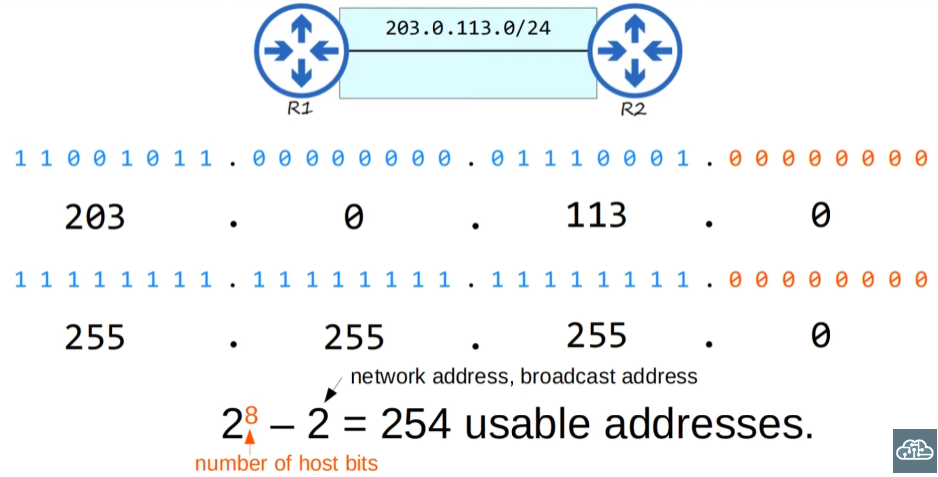
- CIDR let’s us use different prefix lengths.
CIDR Practice
203.0.113.0/25 = 2^7 = 128 - 2 = 126
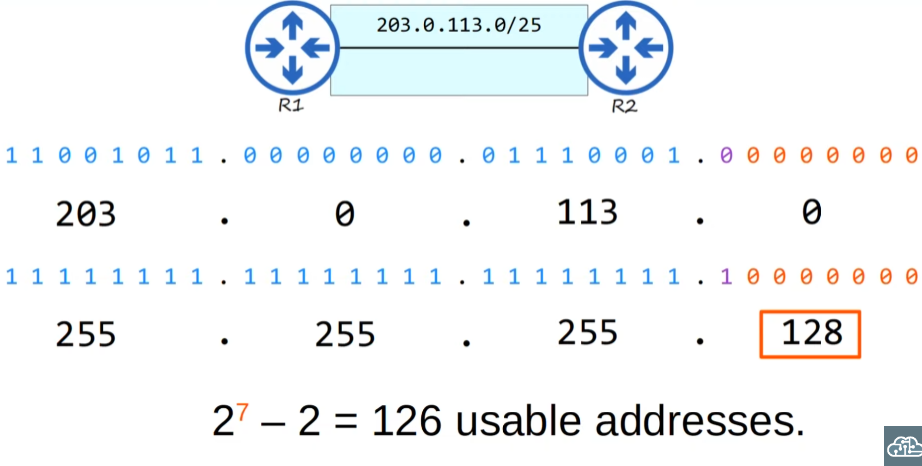
203.0.113.0/26
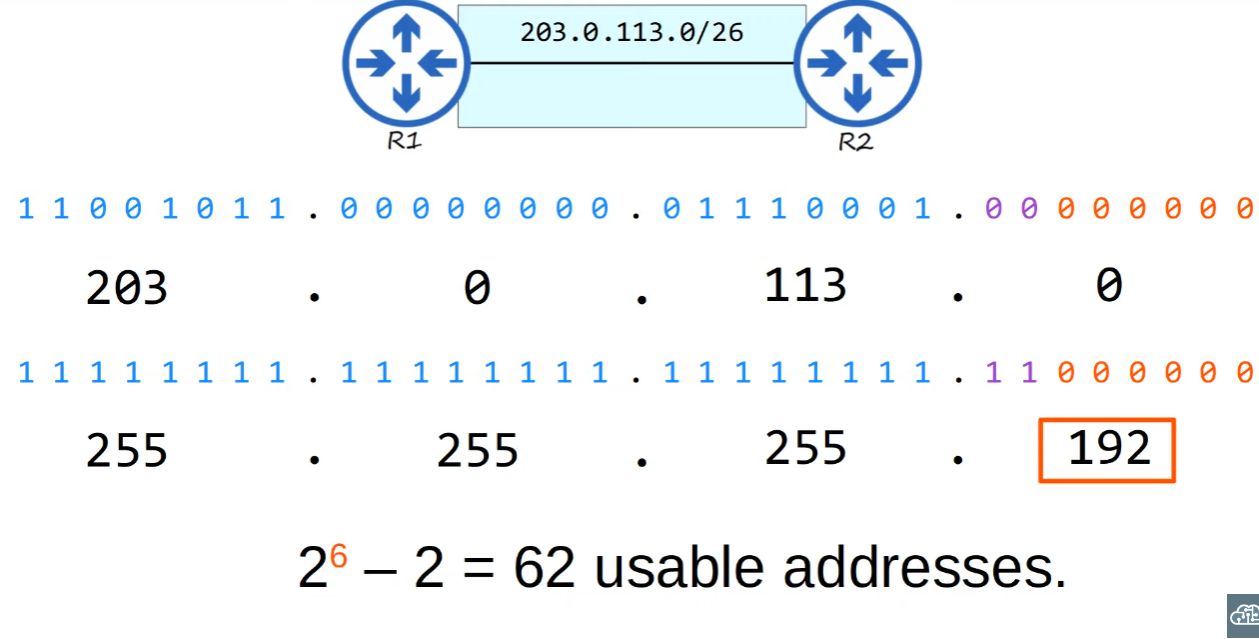
203.0.113.0/27
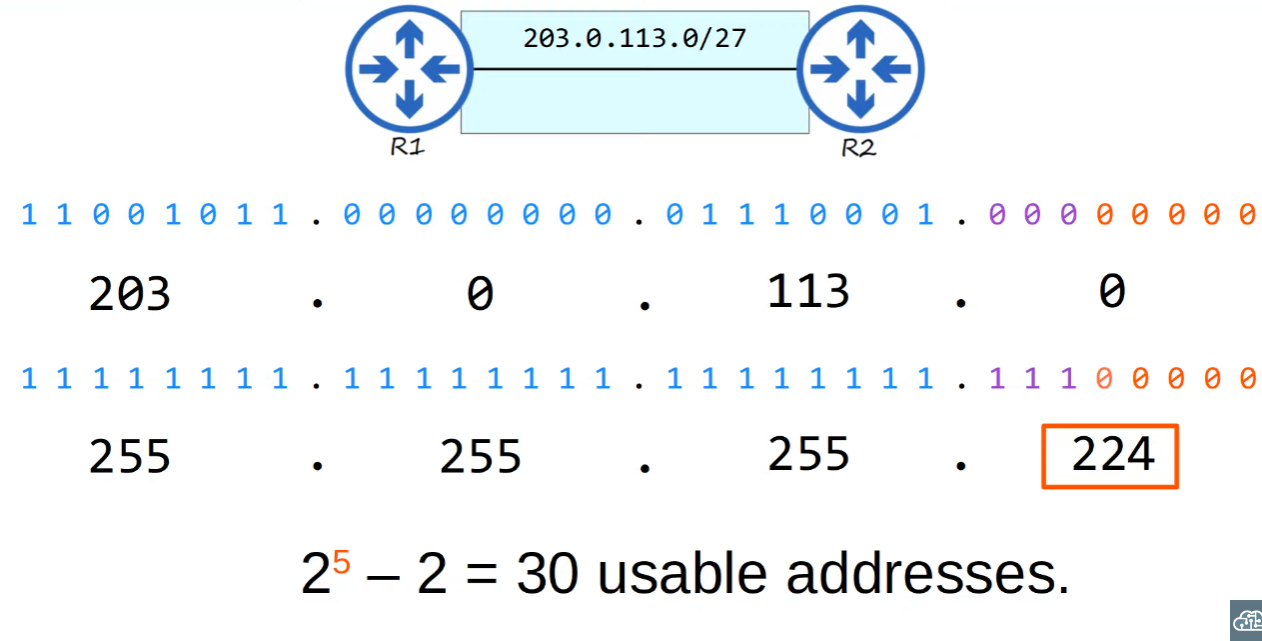
203.0.113.0/28
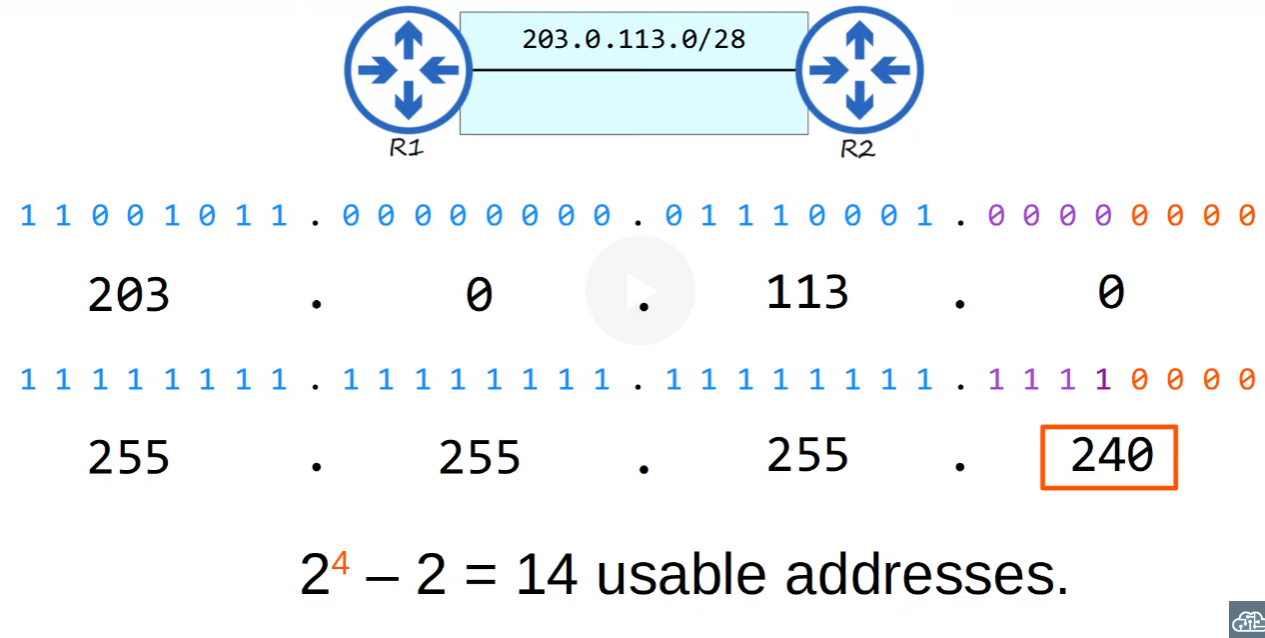
203.0.113.0/29
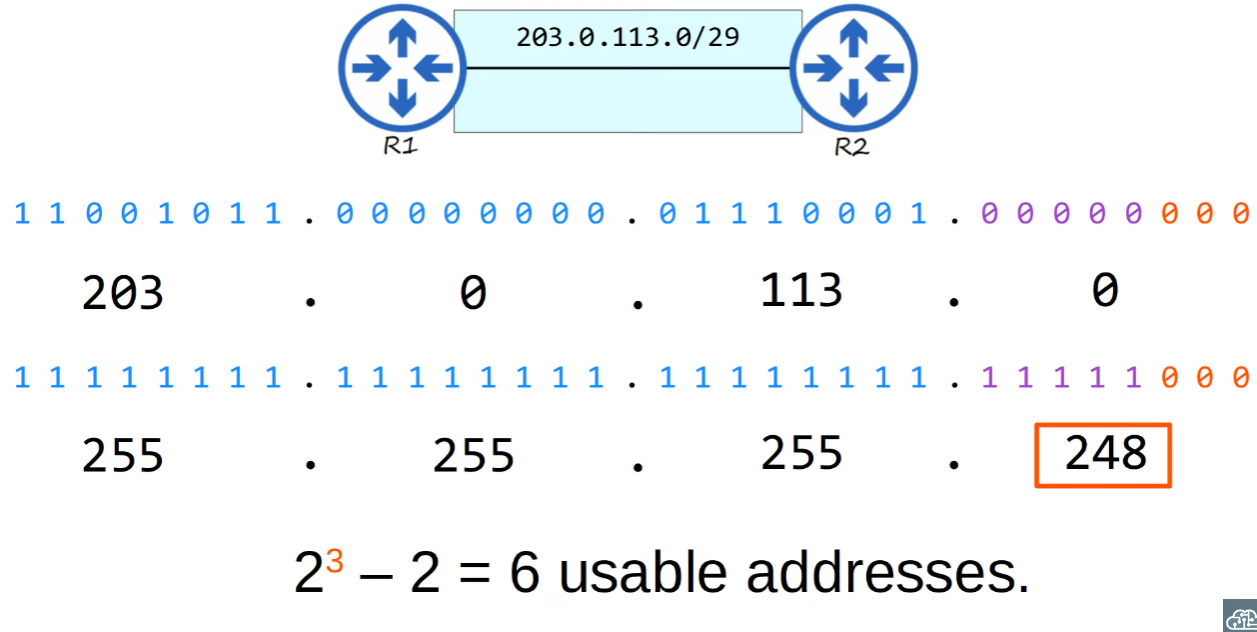
203.0.113.0/30
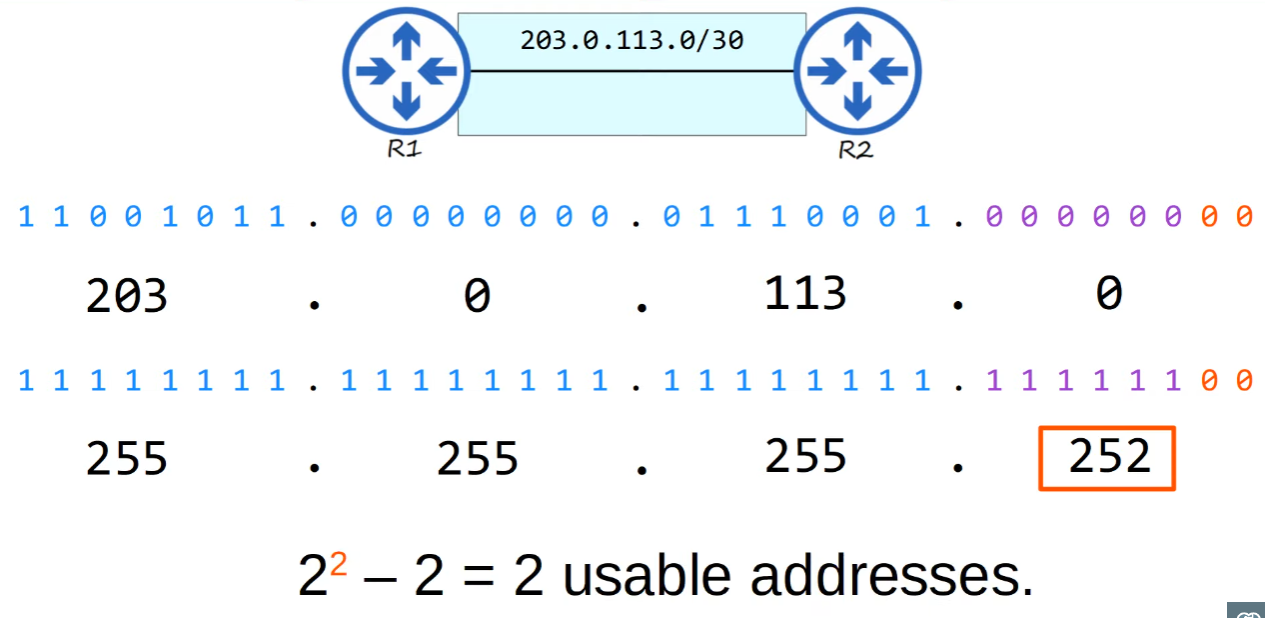
/30 is a subnet of the class C network.
- 203.0.113.0/30 includes 203.0.113.0 - 203.0.113.3, 4 possible addresses, but only 2 usable addresses.
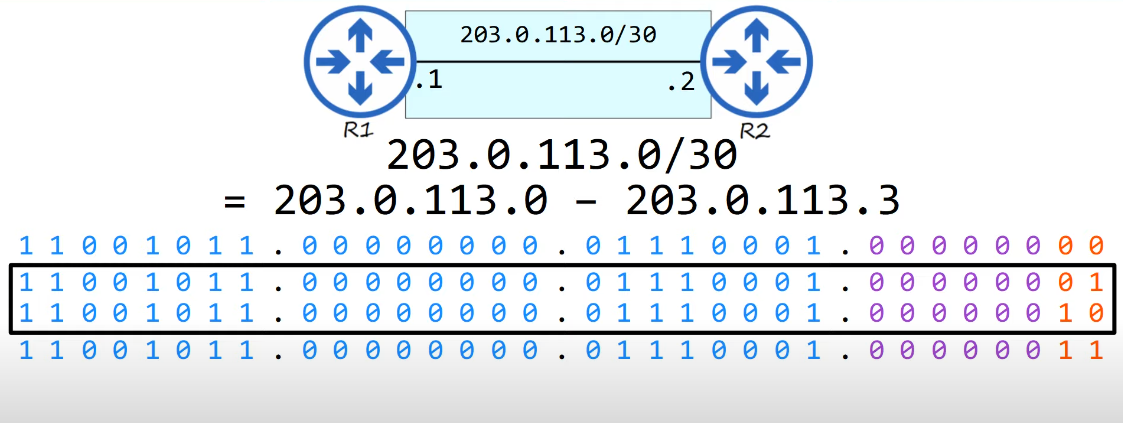
The remaining addresses in 203.0.113.0/24 address block (203.0.113.4 - 203.0.113.255) are now available to be used in other subnets!
Is there a way to be even more efficient beyond /30?
What’s so special about /31?

- There are 0 usable addresses. However, for a point-to-point connection, it’s possible to use a /32 netmask.
- 203.0.113.0/31 contains the addresses:
- 203.0.113.0
- 11001011.00000000.01110001.00000000
- 203.0.113.1
- 11001011.00000000.01110001.00000001
- 203.0.113.0
- Such a configuration is valid for a point-to-point connection.
- The remaining addresses in the 203.113.0/24 address block (203.0.113.2 - 203.0.113.255) are available to be used in other networks. Great.
and /32?
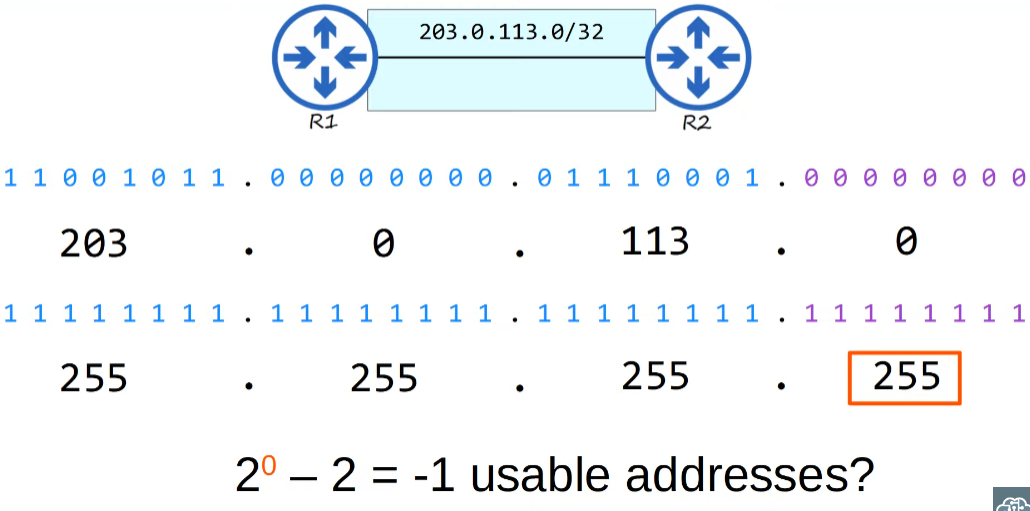
- Unusable to configure interfaces.
- Some uses include:
- Static route to specify an exact host.
- Other…
CIDR Notation (Class C)
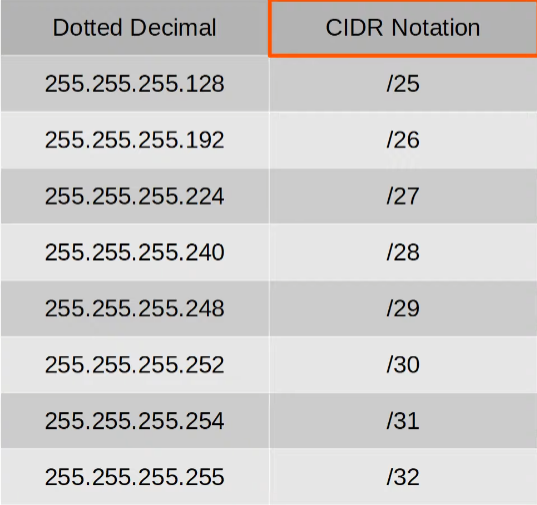
Question 1
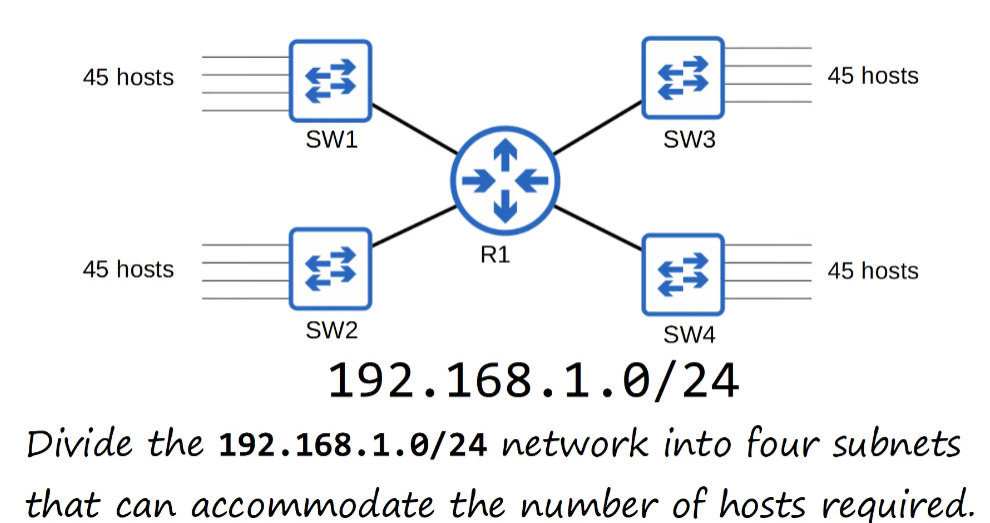
- Determine the number of networks required.
- 45 + 2 = 47
- 47 * 4 = 188 (well within the range of a class C subnet which has 256 subnets)
- How to calculate the subnets we need to make?
- /30 gives us 2^2 - 2 = 4 usable addresses
- /29 gives us 2^2 - 2 = 6 usable addresses
- /28 gives us 2^4 - 2 = 14 usable addresses
- /27 gives us 2^5 - 2 = 30 usable addresses
- /26 gives us 2^6 - 2 = 62 usable addresses – this provides us more than we need.
Subnet 1: 192.168.1.0/26
- (range is 192.168.1.0 to 192.168.1.63), where…
- 192.168.1.0 = network addresses
- 192.168.1.63 = broadcast address
- 192.168.1.1 = first usable
- 192.168.1.62 = last usable
Subnet 2: 192.168.1.64/26
- (range is 192.168.1.64 to 192.168.1.127), where…
- 192.168.1.64 = network addresses
- 192.168.1.127 = broadcast address
Subnet 3: 192.168.1.128 - 192.168.1.191
Subnet 4: 192.168.1.192 - 192.168.1.255
